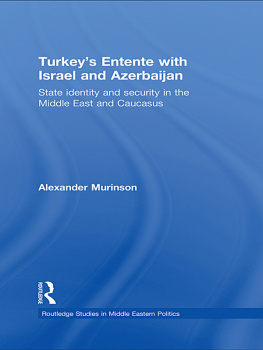First published 2002
by RoutledgeCurzon
2 Park Square, Milton Park, Abingdon, Oxon, OX14 4RN
Simultaneously published in the USA and Canada
by RoutledgeCurzon
711 Third Avenue, New York, NY 10017, USA
RoutledgeCurzon is an imprint of the Taylor & Francis Group
First issued in paperback 2011
2002 Emmanuel Karagiannis
Typeset in Stempel Garamond by LaserScript Ltd, Mitcham, Surrey
All rights reserved. No part of this book may be reprinted or reproduced or utilised in any form or by any electronic, mechanical, or other means, now known or hereafter invented, including photocopying and recording, or in any information storage or retrieval system, without permission in writing from the publishers.
British Library Cataloguing in Publication Data
A catalogue record of this book is available from the British Library
Library of Congress Cataloguing in Publication Data
A catalogue record for this book has been requested
ISBN 978-0-700-71481-0 (hbk)
ISBN 978-0-415-51528-3 (pbk)
eISBN 978-1-134-54742-5
I wish to acknowledge the assistance and the guidance of the following: Firstly, my sincere gratitude to my mother who supported me financially and morally throughout my years of higher education in England. Without her kind assistance I would have never been able to reach this level. To her I owe everything. I would also like to extend my gratitude to Mr Ernie Garcia for his invaluable assistance. I am also indebted to Professor Neoklis Sarris of Panteion University (Athens, Greece) and Mr Theodoros Binihakis, Editor of Ellopia, for their intellectual encouragement. Last but not least, I am grateful to many people who participated in and contributed to the development of my book. I would like to thank all of them: friends, academics and diplomats.
The Caucasus is perhaps the most understudied region of the former Soviet Union. Yet, the availability of private-sector funding has ensured that the question of energy transportation in the region has quickly become a thriving area of research and analysis. Indeed, Western oil companies themselves have become experts on the Caucasus, with regard not only to commercial and technical issues, but also to the broader geopolitical context. It is rare, however, that the insights of oil-company experts are published. In addition, many consultancies in Western Europe and, mostly, the United States have begun to provide regional political analysis for the oil industry, but it is usually exclusive to paying clients.
As a result, a considerable amount of knowledge has been confined to the realm of closed private-sector analysis, with negative consequences for the scholarly and policy work being done on the issue of energy transportation in the Caucasus region. It is to the ambitious task of adding a new contribution to the debate revolving around the geopolitics of energy transportation in the Caucasus that the present book is dedicated. It is based on a doctoral dissertation submitted in September 1999 at the University of Hulls Department of Politics and Asian Studies. For source material, the book relies upon primary sources, including official documents, interviews and company reports, together with books, journals and periodicals dealing with relevant matters. The main aim of the book is to survey the extent to which pipeline development and operation in the Caucasus is connected with broad security issues and influence the regional relations of enmity and amity. It also aims to initiate a debate among Western policy-makers and energy specialists about the general relationship between the oil transportation industry and conflict, and suggests some ideas for risk-management strategies. The significance of that relationship is all the greater because, whilst the Caucasus region is characterised by some unique elements, similar problems are likely to be repeated in the oil-rich Central Asia region.




















